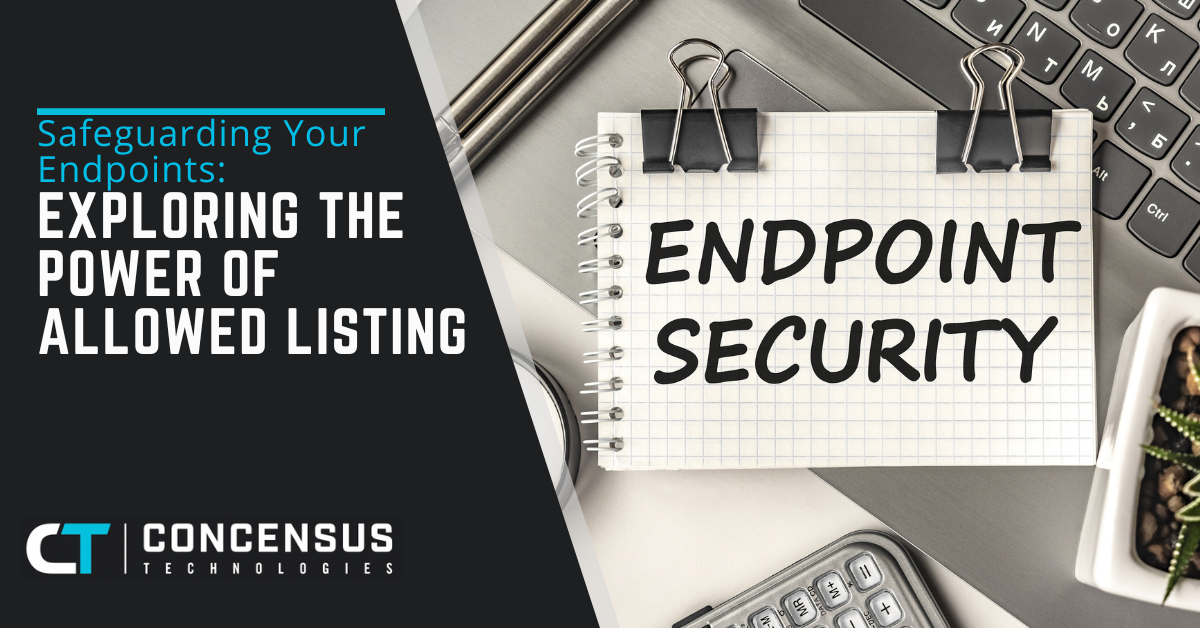
Safeguarding Your Endpoints: Exploring the Power of Allowed Listing
| July 1, 2023In the digital age, where data security and privacy have become paramount concerns, protecting our endpoints is of utmost importance. Whether it’s personal devices, servers, or network resources, safeguarding these endpoints is crucial to prevent unauthorized access and potential data breaches.
One effective security measure that plays a significant role in endpoint protection is known as “Allowed Listing.” In this article, we will discuss the concept of Allowed Listing, its purpose, and how it fortifies your endpoints against potential threats.
What is Allowed Listing?
Allowed Listing, also known as Whitelisting, is a security practice that involves creating a predefined list of trusted applications, devices, or entities that are explicitly permitted to access a system or network. It operates on the principle of granting access only to known and approved entities, while denying entry to all others.
Unlike traditional security measures that focus on blocking known threats, Allowed Listing adopts a proactive approach by allowing only authorized entities to interact with your endpoints.
What is the Purpose of Allowed Listing?
Strengthening Endpoint Security
One of the primary objectives of Allowed Listing is to enhance endpoint security by restricting access to a limited set of approved applications or devices. By defining a whitelist, you establish a security perimeter that ensures any communication or interaction with your endpoints occurs exclusively with trusted sources. This significantly reduces the risk of malware infections, unauthorized access attempts, and other potential threats that may exploit vulnerabilities in your system.
Preventing Zero-Day Attacks
Zero-day attacks refer to security breaches that exploit vulnerabilities unknown to software vendors. These attacks can be highly sophisticated and difficult to detect using conventional security measures.
However, Allowed Listing acts as a potent defense against such attacks. By allowing only known and approved applications, even if an attacker manages to exploit a vulnerability, their malicious software will not be able to execute since it is not part of the whitelist. This proactive approach ensures that your endpoints remain secure, even in the face of unknown threats.
How Can You Implement Allowed Listing?
Create a Comprehensive Whitelist
To implement Allowed Listing effectively, it is crucial to develop a comprehensive whitelist that includes all authorized applications, devices, and entities. This process requires a thorough assessment of your system’s requirements, identifying the essential software and devices necessary for your operations.
It is important to regularly review and update the whitelist to accommodate changes in your network infrastructure, software versions, and personnel requirements.
Manage Exceptions
While Allowed Listing focuses on permitting access only to approved entities, it is essential to have a system in place to handle exceptions. There may be instances where new applications or devices need to be added to the whitelist promptly.
Implementing a streamlined process to evaluate and approve such exceptions ensures that your business operations are not hindered while maintaining the overall security of your endpoints.
Leverage Automation and Endpoint Protection Solutions
The implementation and management of Allowed Listing can be made more efficient and streamlined with the use of automation tools and endpoint protection solutions. These solutions can assist in automating the process of creating and updating whitelists, tracking changes in software versions, and providing real-time alerts and reports on any unauthorized attempts to access your endpoints.
Leveraging such technologies empowers organizations to maintain a robust security posture while reducing the administrative overhead associated with manual whitelisting management.
What are the Benefits of Allowed Listing?
Enhanced Security Posture
By adopting Allowed Listing, organizations can significantly enhance their security posture. By allowing only known and trusted entities to access endpoints, the attack surface is minimized, reducing the potential for breaches and data loss. This proactive approach provides peace of mind, knowing that unauthorized or malicious applications will not be able to compromise the integrity of your systems.
Mitigating Insider Threats
Allowed Listing also serves as an effective measure to mitigate insider threats. By explicitly defining the applications and devices that employees or internal stakeholders are authorized to use, organizations can prevent unauthorized software installations or risky behavior that may compromise endpoint security.
Simplified Security Management
Compared to traditional security approaches that rely on constantly updating blacklists or signatures, Allowed Listing simplifies security management. With a predefined whitelist, organizations can focus their efforts on managing a limited set of trusted entities, reducing the time and resources required for monitoring and combating evolving threats.
Get Started Today
Allowed Listing is a powerful security practice that bolsters endpoint protection by allowing only authorized entities to access your systems and networks. By adopting this proactive approach, organizations can fortify their security posture, prevent zero-day attacks, and mitigate insider threats.
Implementing a comprehensive whitelist, managing exceptions, and leveraging automation and endpoint protection solutions are key steps to ensure the effective implementation of Allowed Listing.
To learn more about how Allowed Listing can strengthen your endpoint security or to discuss customized solutions for your organization, contact Concensus Technologies today.

